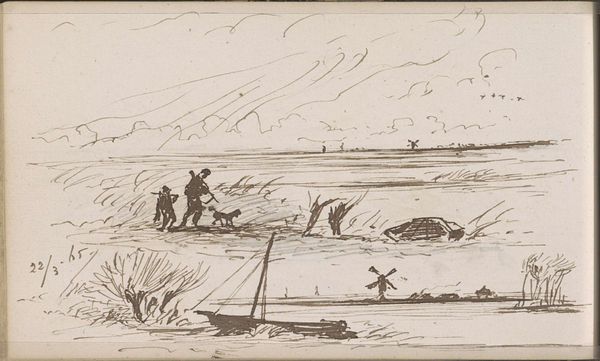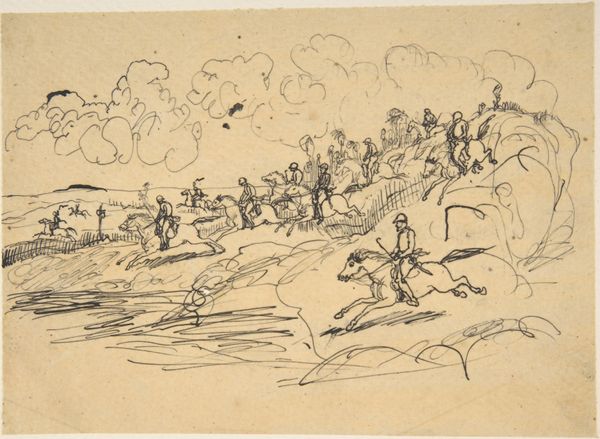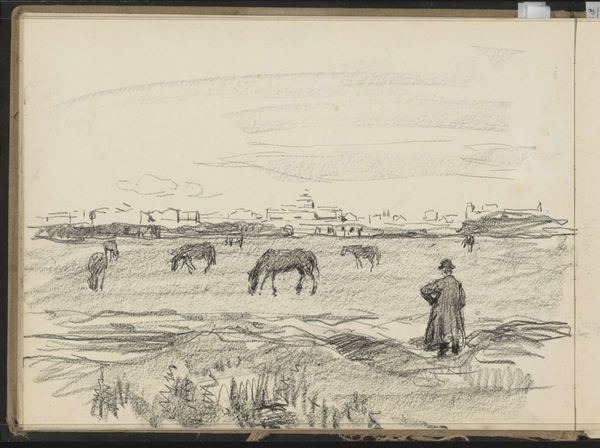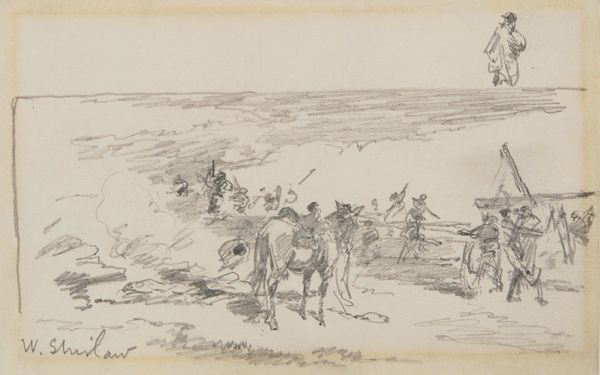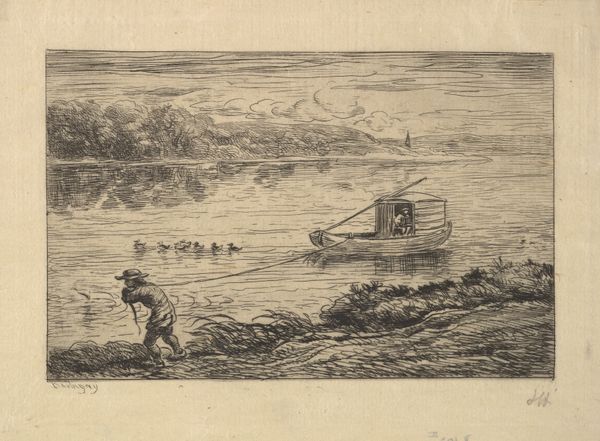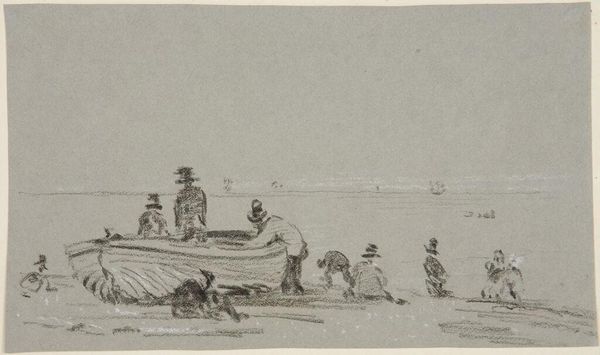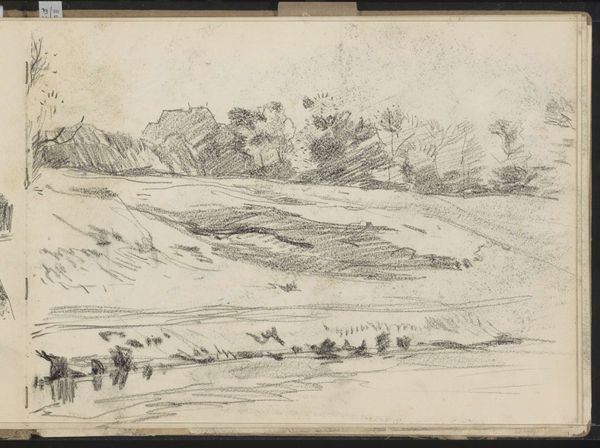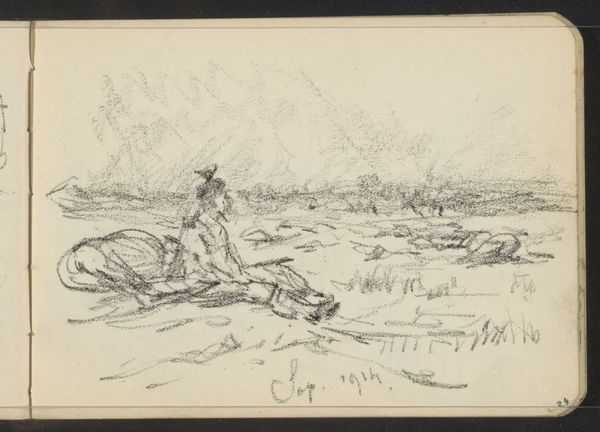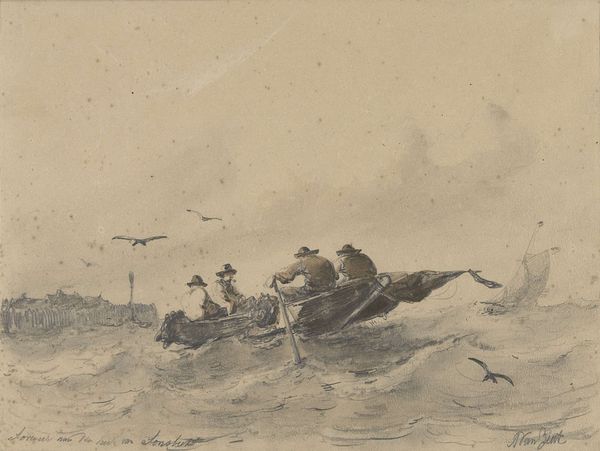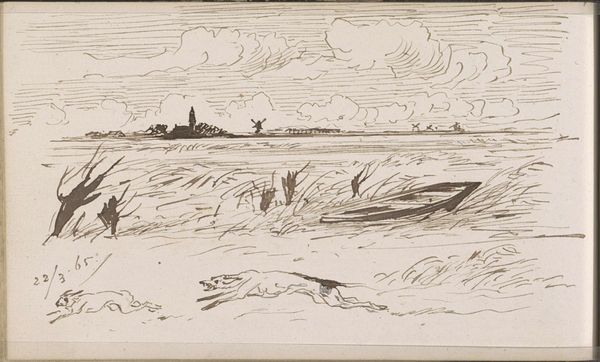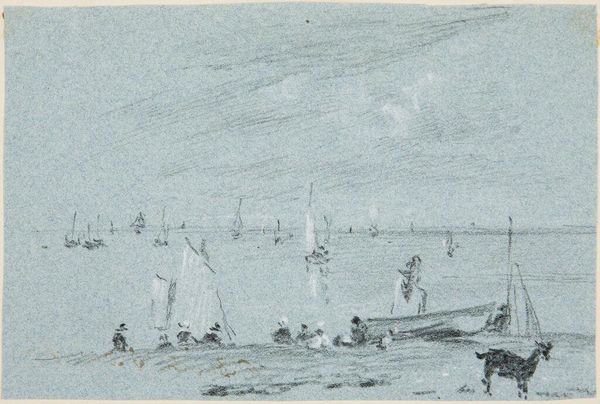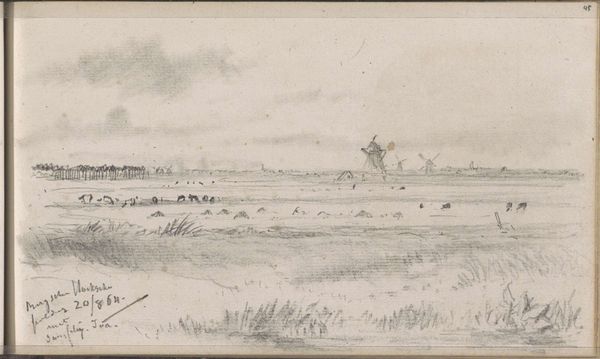
Landschap met figuren die een roeiboot de waterkant op trekken 1865
0:00
0:00
johannestavenraat
Rijksmuseum
drawing, ink
#
drawing
#
ink drawing
#
landscape
#
ink
#
genre-painting
#
realism
Copyright: Rijks Museum: Open Domain
Curator: The first impression I get from Johannes Tavenraat’s ink drawing "Landscape with Figures Pulling a Rowing Boat to Shore" is one of stark, windswept labor. It's dated 1865 and currently held in the collection of the Rijksmuseum. Editor: I see figures engaged in labor but also notice the tension between representation and the artistic process itself. What does the act of drawing, the choices of ink and paper, tell us about the artist’s understanding, or even romanticizing, of labor? Curator: Tavenraat seems to focus more on accurately capturing the physical strain involved, down to the posture of each figure. Look at the way the figures are interacting with the landscape, their hands grasping ropes attached to the boat; you can almost feel the weight and drag. It suggests a direct engagement with the materiality of work. Editor: Precisely. Realism emerged alongside the rise of industrial capitalism, offering representations of the working class and their relationship to production. But what about those with power depicted? What about class relationships and how they shaped access to resources and determined these people's labor? Curator: Well, think about what this scene omits. The actual process of fishing, for example, is missing; what is being made available here is work as tangible labor rather than its economic endpoint, drawing focus to its physicality rather than any commodity produced. The medium itself lends to this, as an ink drawing is an easily reproducible method, like these workers themselves who are doing work. Editor: Yes, but it’s important to acknowledge the art market in this. An artwork portraying the working class, like this, gets sold and possessed by wealthy patrons. Are these figures being displayed without critique? This makes it a social statement regarding inequality. Curator: But this level of detail feels inherently respectful of the labor performed, and it avoids aestheticizing it into something falsely idyllic. He seems concerned with the here and now of the task at hand, trying to faithfully represent its textures. It makes me wonder, what inks were available at the time, what supports might he use, who sold them, who were his art making peers and contemporaries? Editor: A powerful and important consideration to ensure these scenes continue to receive their due attention and remain subject to robust analyses about artistic intent and contemporary social forces.
Comments
No comments
Be the first to comment and join the conversation on the ultimate creative platform.
